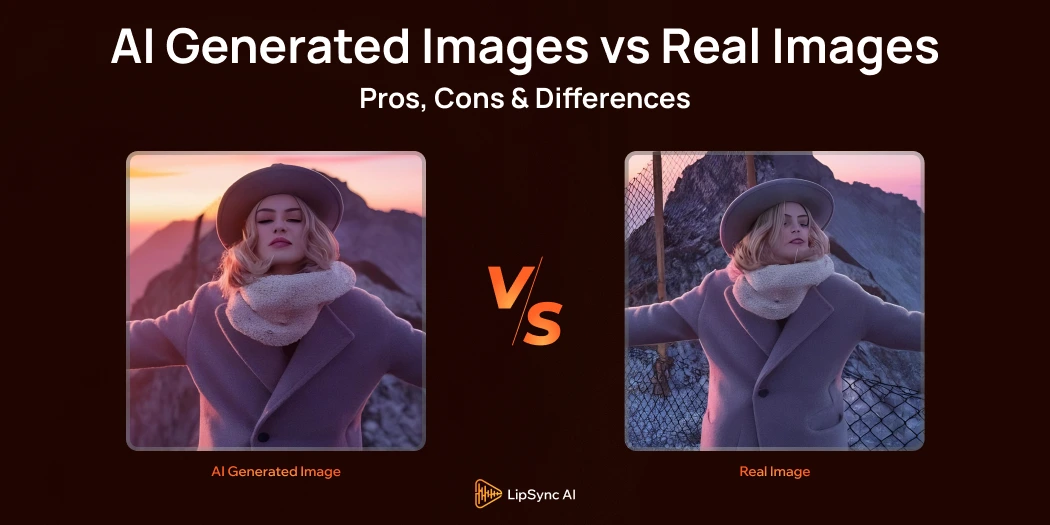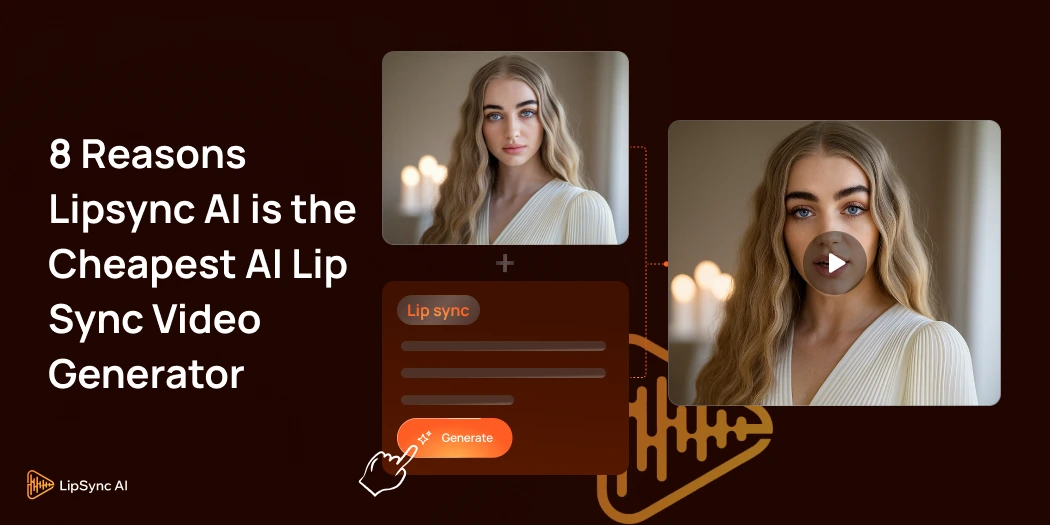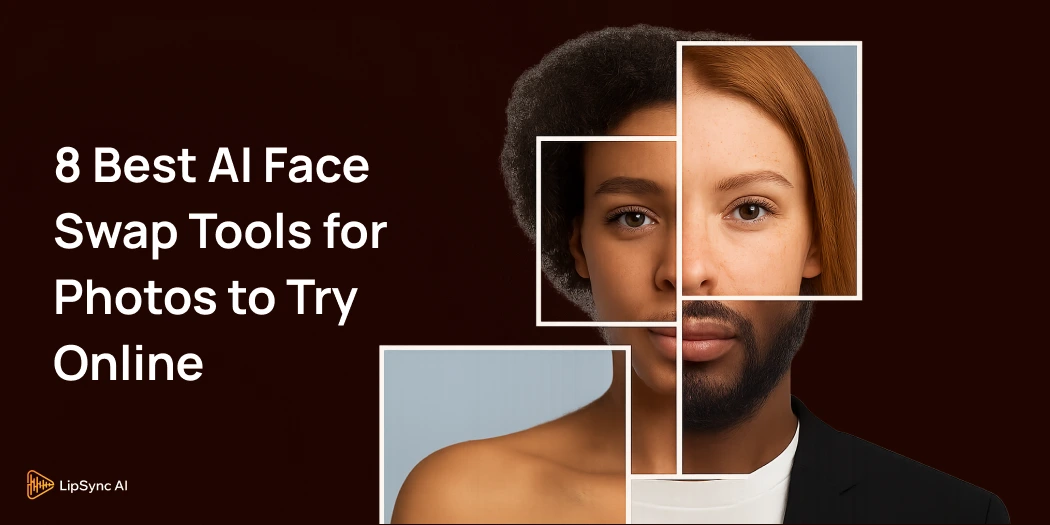Images are an important part of the online world. Whether it’s a blog, website, online shop, or social media post, the right picture makes the content more attractive and easy to connect with.
For a long time, all images were taken with cameras—showing real people, real products, and real places. But today, technology has introduced something new: AI generated images. These are pictures created by artificial intelligence in just a few seconds, often looking very real even though they don’t actually exist.
This brings us to an important question: AI generated images vs real images-What is the difference? And more importantly, which one should you use for your business, blog, or creative project?
In this blog, we will:
- Explain what AI-generated images are.
- Understand what real images are.
- List the main differences between them.
- Discuss the pros and cons of both.
- Help you decide which option is better for your needs.
By the end, you’ll have a clear idea of when to use AI images and when real images are the smarter choice.
What are AI-Generated Images?
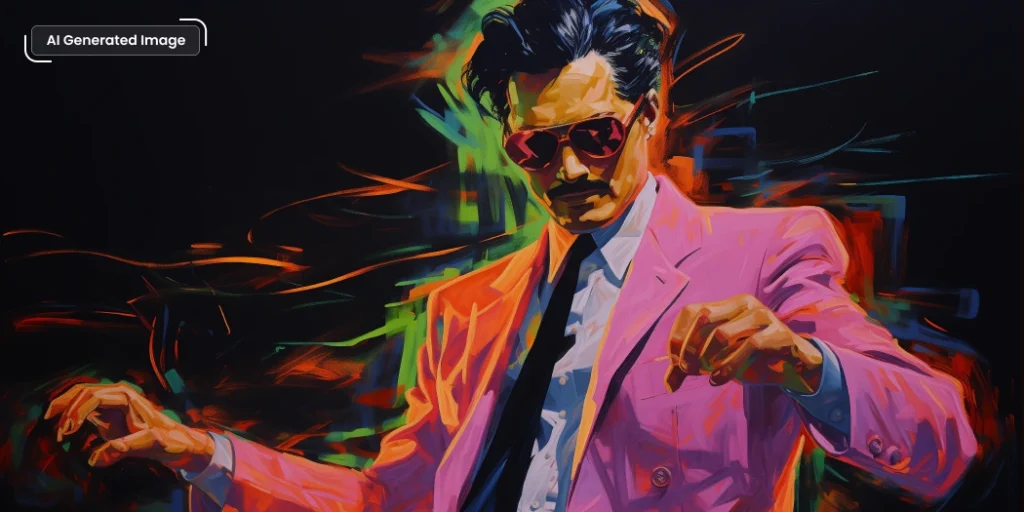
AI-generated images are created by artificial intelligence using advanced machine learning. These systems analyze huge amounts of data to learn patterns, styles, and elements of visuals. Then, based on text descriptions or specific inputs, they create brand-new images.
The technology behind this includes neural networks like Generative Adversarial Networks (GANs) and diffusion models.
These tools study millions of images to understand things like objects, lighting, composition, and art styles.
Key Features of AI-Generated Images:
- No camera needed – created only by AI software.
- Very fast – images are ready in a few seconds.
- Multiple styles – can look realistic, cartoon-like, or digital art.
- Almost real – some images look just like photos, but they are computer-made.
What Are Real Images?
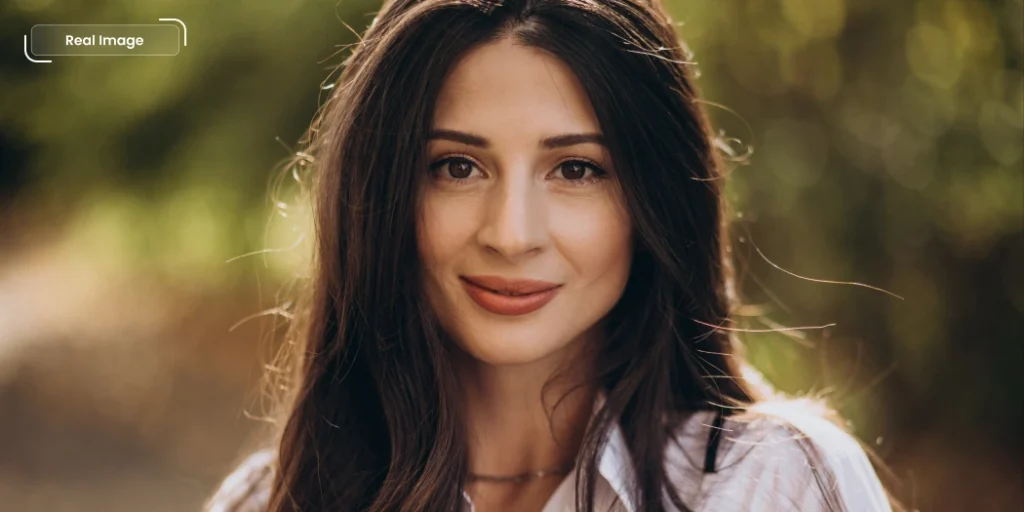
Real images are photos taken by cameras, like on a phone or a digital camera. They show real people, places, or things just like they are in real life.
When a photographer takes a real photo, they decide how to shoot it by choosing the best angle, lighting, and moment to make the photo look good and tell a story.
Real images feel true because they capture actual moments or scenes. This makes people trust them more, especially for brands that want to show real experiences to customers.
To make a real image, photographers plan the shoot, take the pictures, and then may fix colors or light in the computer—but they keep the photo looking like the real scene.
Key Features of Real Images:
- Taken by a camera in real life
- Show real moments and real subjects
- Made by humans with skills like choosing light and angle
- Look natural with real colors and details
Key Differences Between AI Generated Images and Real Images
The characteristics of ai generated images vs real photos come down to how they are made, how they look, and how they are used. Knowing these key differences helps creators pick the best option for their needs.
| Features | AI Generated Images | Real Images |
|---|---|---|
| Source | Created by artificial intelligence models using text or algorithm inputs. | Captured by real cameras or smartphones. |
| Authenticity | Artificial, made from learned data patterns. | Genuine, representing real people, places, moments, and objects as they actually are. |
Creation Method | Quickly create AI images from text prompt in minutes. Just type a description and get several options instantly. | Real photography takes planning, setup, and depends on things like weather, lighting, and schedules. |
Details | May have odd or distorted features (e.g., fingers, teeth, hands). | Show natural, accurate details of subjects. |
Perfection and Style | Often look too smooth or perfect, like a painting or computer graphic. | Show natural imperfections like wrinkles, shadows, or uneven lighting. |
Text and Logo | Text or logos in the images can be unclear or wrong. | Text and letters appear clear and correct. |
Lighting and Shadows | May have odd or impossible lighting and shadow directions. | Follow real-world light and shadow rules perfectly. |
Backgrounds | May have unrealistic or patched-together backgrounds. | Backgrounds are real and consistent with the scene. |
Speed of Creation | Made very quickly, in seconds or minutes. | Taking and editing real photos can take hours or days. |
Use Types | Good for creative art, fantasy images, and quick designs. | Best for real memories, news photos, or truthful stories. |
Mistakes | Weird hands, shiny skin, mismatched eyes, odd objects. | Natural human and object proportions with no weird glitches. |
Pros & Cons of AI Generated Images
Pros:
- Cost-effective: Saves money compared to hiring photographers or designers.
- Fast creation: Generates images in seconds or minutes, saving time.
- Creative flexibility: Can create unique and imaginative images easily.
- Easy customization: Quickly tailor images to specific needs or styles
- Unlimited variations: Produce many versions quickly for testing or options.
- Accessible: Allows people without design skills to create visuals.
- Reduces copyright risks: Often creates unique images free from stock photo licensing issues.
Cons:
- Lacks human emotion: Images can feel less natural and less emotional.
- Quality issues: Sometimes produces strange or distorted features (extra fingers, odd shadows).
- Ethical/legal concerns: AI may train on copyrighted images, raising ownership issues.
- Overuse risk: Many similar images may be created by different users, losing uniqueness.
- Context errors: AI might misunderstand culture or situation, creating inappropriate images.
- Learning curve: Making good images needs skill in prompt writing and settings.
- Impact on creatives: May reduce jobs for photographers and artists.
Pros & Cons of Real Images
Pros:
- Show real moments: Capture true scenes and genuine emotions exactly as they happen.
- Authentic and trustworthy: People trust photos because they come from real life.
- High detail and quality: Show natural colors, textures, and lighting perfectly.
- Human creativity: Skilled photographers create beautiful, meaningful compositions.
- Tell stories: Photos can convey strong emotional and cultural stories.
- Preserve memories: Help people save important moments for the future.
- Wide use: Useful for journalism, advertising, art, and personal keepsakes.
Cons:
- Needs effort and skill: Taking great photos requires experience and creativity.
- Expensive equipment: Good cameras and gear can cost a lot.
- Time-consuming: Planning, shooting, and editing can take hours or days.
- Depend on conditions: Lighting, weather, and location affect the photo quality.
- Limited by reality: Can only capture what actually exists or happens.
- Copyright issues: Photographers must protect their work from being copied.
- Pressure from clients: Photographers face high expectations and demands.
When to Use AI-Generated Images vs Real Images
Here are some use cases to help you decide real vs AI generated images for your project:
Choose AI-Generated Images When:
Creating lots of visual content can be expensive and time-consuming with traditional photography. Here’s how AI can help:
- High volume needs: Social media, blogs, and digital marketing often need hundreds of images. AI makes it affordable to create these in large quantities.
- Budget-friendly: Small businesses or startups with limited budgets can get professional-quality visuals at a lower cost compared to traditional photography.
- Faster results: For urgent projects like product launches or trending topics, AI can generate visuals in minutes instead of days.
- Creative freedom: AI is perfect for creating visuals that are hard or impossible to photograph, like fantastical scenes or historical recreations.
AI generation is a smart, efficient way to meet modern content demands!
Choose Real Images When:
- Authenticity builds trust: Real photography highlights transparency, craftsmanship, and human connections, showcasing real people, products, and environments.
- Legal clarity is essential: Professional photography ensures clear ownership rights, especially in industries with strict compliance or high-stakes commercial needs.
- Emotional impact matters: Campaigns focusing on personal stories and authentic experiences connect better with genuine human elements captured through real photography.
- Accuracy is key for technical use: Fields like e-commerce, medical imaging, or technical documentation need precise and reliable visuals, which real photography delivers better than AI.
Conclusion
We hope you now understand the difference between AI generated images vs real images. Both types of images have their own strengths and weaknesses. AI images are great because they are fast, cost-effective, and let you create almost anything you imagine. Real images show true moments and build trust because they come from the real world.
When looking at an AI generated vs real image comparison, the right choice depends on your project or business needs. Sometimes using both together can give you the best results—mixing creativity with authenticity.
By knowing the pros, cons, and differences, you can make smarter choices and create images that connect well with your audience.
Frequently Asked Questions
AI-generated images are pictures created by computer programs using artificial intelligence. You type a description, and the AI makes an image based on that text.
AI images are made by software without a camera, while real images are photos taken with a camera of actual things or people.
Yes, many AI images look very close to real photos, but sometimes they have small mistakes like odd shapes or extra fingers.
Yes, many AI images can be used commercially, but you should check the license rules of the AI tool you use.
Not always. Real images are better for authenticity and trust, while AI images are faster and cheaper for creative or imaginary visuals.
Sometimes it is hard, but AI images may show subtle errors like unnatural shadows, strange backgrounds, or unrealistic body parts.
